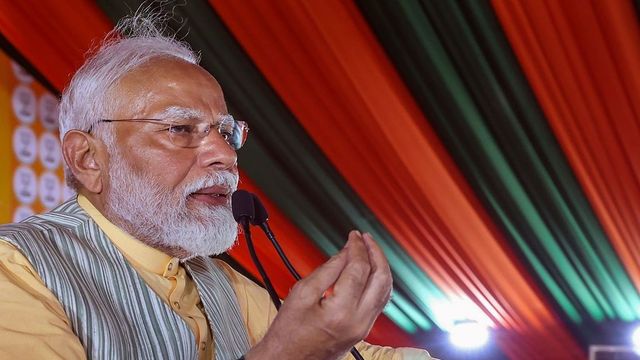Understanding The Connection Between Federal Debt And Mortgage Costs

Table of Contents
How Government Borrowing Impacts Interest Rates
The relationship between federal debt and mortgage costs is largely driven by the impact of government borrowing on interest rates. When the government needs to finance its debt, it borrows money by issuing Treasury bonds and other securities. This increased borrowing directly influences the overall cost of borrowing across the economy.
The Basics of Supply and Demand
Increased government borrowing increases the demand for loanable funds. Think of it like this: if the government is borrowing heavily, there are fewer funds available for private borrowers, including those seeking mortgages. This increased demand pushes interest rates higher. This is known as the "crowding out effect," where government borrowing "crowds out" private borrowing.
- Example 1: Imagine a limited pool of money available for lending. If the government borrows a significant portion, less remains for mortgages, driving up mortgage rates.
- Example 2: Increased demand for loans forces lenders to raise interest rates to manage their risk and maintain profitability.
- The Crowding Out Effect: Government borrowing competes with private sector borrowing for available funds. The more the government borrows, the less is left for businesses and individuals, thus increasing the cost of borrowing for everyone.
The Federal Reserve's Role
The Federal Reserve (the Fed), the central bank of the United States, plays a critical role in managing interest rates and inflation. The Fed's actions in response to increased government borrowing and inflation directly impact mortgage rates.
- Federal Funds Rate: The Fed can adjust the federal funds rate (the target rate banks charge each other for overnight loans). Raising this rate generally increases borrowing costs across the board, including mortgage rates.
- Quantitative Easing (QE): During periods of economic crisis, the Fed may use quantitative easing, purchasing government bonds to increase the money supply and lower long-term interest rates. However, QE can also contribute to inflation in the long run.
- Inflation Control: The Fed's primary mandate is to maintain price stability. High inflation, often linked to high federal debt, can lead the Fed to raise interest rates to cool down the economy, impacting mortgage rates.
Inflation's Impact on Mortgage Costs
High levels of federal debt can contribute to inflation, a sustained increase in the general price level of goods and services. This is because increased government spending can lead to increased demand without a corresponding increase in supply, pushing prices upward.
The Relationship Between Federal Debt and Inflation
Sustained high levels of federal debt can lead to higher inflation through several mechanisms:
- Increased Money Supply: Government borrowing can increase the money supply, leading to more money chasing the same amount of goods and services, resulting in higher prices.
- Reduced Purchasing Power: Inflation erodes the purchasing power of money, meaning that the same amount of money buys fewer goods and services.
- Impact on Building Materials: High inflation can significantly increase the cost of building materials, impacting the cost of new home construction and potentially driving up home prices.
Inflation's Effect on Mortgage Rates
Lenders factor inflation expectations into their mortgage rates. If inflation is expected to rise, lenders will typically increase mortgage rates to protect their real returns.
- Inflation Expectations: Lenders build anticipated inflation into interest rates to ensure the real value of their loan isn't eroded by rising prices.
- Adjustable-Rate Mortgages (ARMs): ARMs are particularly sensitive to inflation, as their interest rates adjust periodically based on prevailing market conditions, including inflation rates.
- Long-Term Mortgage Rates: Even fixed-rate mortgages are affected, albeit less directly, as lenders consider long-term inflation forecasts when setting rates.
Other Factors Influencing Mortgage Costs
While the relationship between federal debt and mortgage costs is significant, other economic factors also play a crucial role.
Economic Growth and Mortgage Rates
Strong economic growth can lead to higher interest rates. When the economy is booming, demand for credit increases, potentially pushing interest rates up, including mortgage rates.
- Investor Confidence: Increased investor confidence in the economy often translates to higher interest rates as investors seek higher returns.
- Risk Premium: During periods of economic uncertainty, lenders increase the risk premium on loans, leading to higher interest rates.
- Mortgage Market Stability: A stable economy tends to support a stable mortgage market, while economic downturns can disrupt lending and lead to higher rates for borrowers.
The Housing Market's Influence
The dynamics of the housing market, specifically supply and demand, significantly influence both home prices and mortgage rates.
- Housing Supply and Demand: Low housing inventory (fewer homes available for sale) can drive up home prices, potentially leading to higher mortgage rates as lenders assess higher risk in a competitive market.
- Housing Market Trends: Overall trends in the housing market, such as regional growth or decline, play a crucial role in mortgage rate fluctuations.
- Home Prices: Higher home prices often correlate with increased demand and may contribute to higher mortgage rates.
Conclusion
The connection between federal debt and mortgage costs is multifaceted. High federal debt can lead to increased government borrowing, which in turn drives up demand for loanable funds, pushing interest rates higher. Furthermore, high levels of federal debt can contribute to inflation, causing lenders to increase mortgage rates to protect their real returns. While federal debt is a major factor, other economic conditions like economic growth and housing market dynamics also play a vital role in determining mortgage costs. Understanding these interrelationships is crucial for making sound financial decisions. Staying informed about the relationship between federal debt and mortgage costs is crucial for making sound financial decisions. Continue your research and plan accordingly to navigate the complexities of homeownership effectively. Consider consulting with a financial advisor to discuss your specific situation and develop a personalized financial strategy.

Featured Posts
-
 Nyt Mini Crossword Clues And Solutions March 26 2025
May 19, 2025
Nyt Mini Crossword Clues And Solutions March 26 2025
May 19, 2025 -
 Reduced Apple Harvest Predicted Rosy Apple Aphid Impact Assessment
May 19, 2025
Reduced Apple Harvest Predicted Rosy Apple Aphid Impact Assessment
May 19, 2025 -
 Cne Bajo Presion Militar Implicaciones Para Las Elecciones
May 19, 2025
Cne Bajo Presion Militar Implicaciones Para Las Elecciones
May 19, 2025 -
 Decoding Ubers Double Digit April Stock Market Rally
May 19, 2025
Decoding Ubers Double Digit April Stock Market Rally
May 19, 2025 -
 Rafa Nadal Llora La Perdida De Una Leyenda Del Tenis
May 19, 2025
Rafa Nadal Llora La Perdida De Una Leyenda Del Tenis
May 19, 2025
